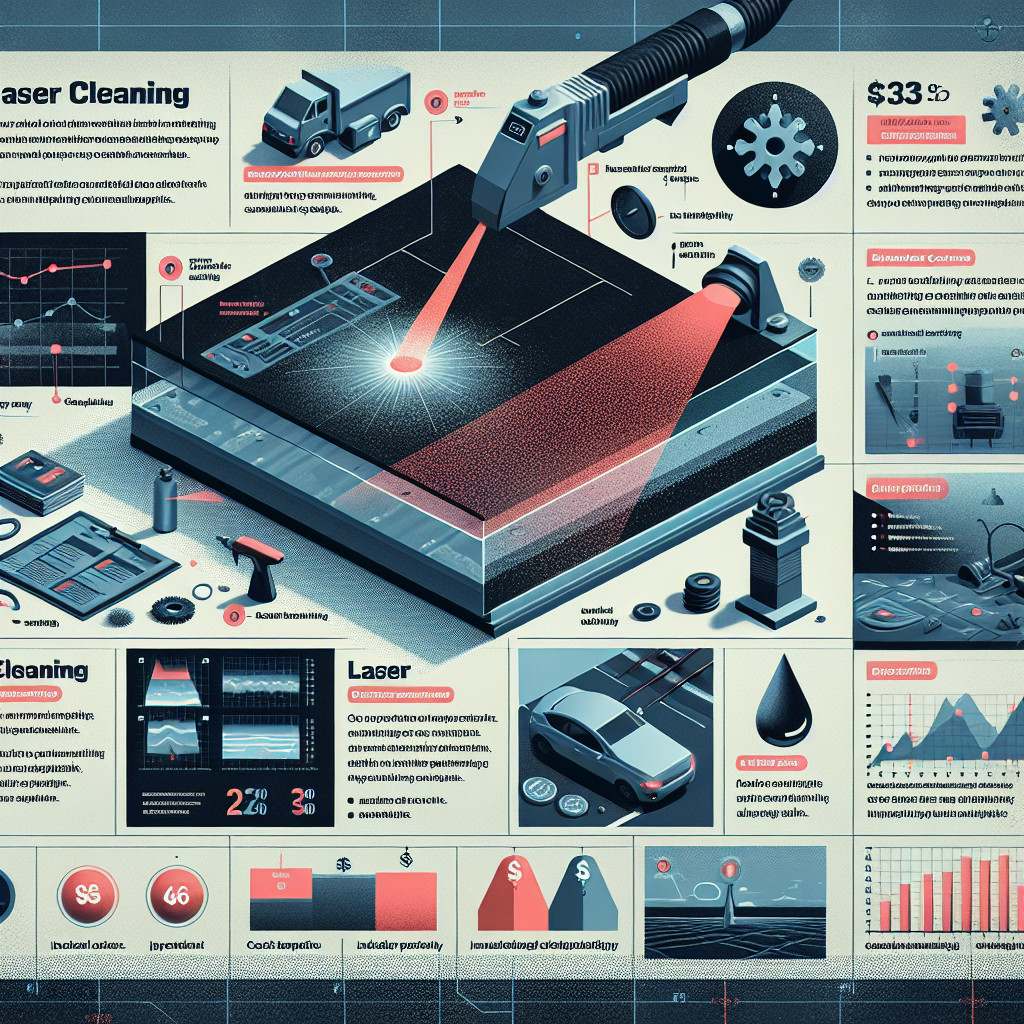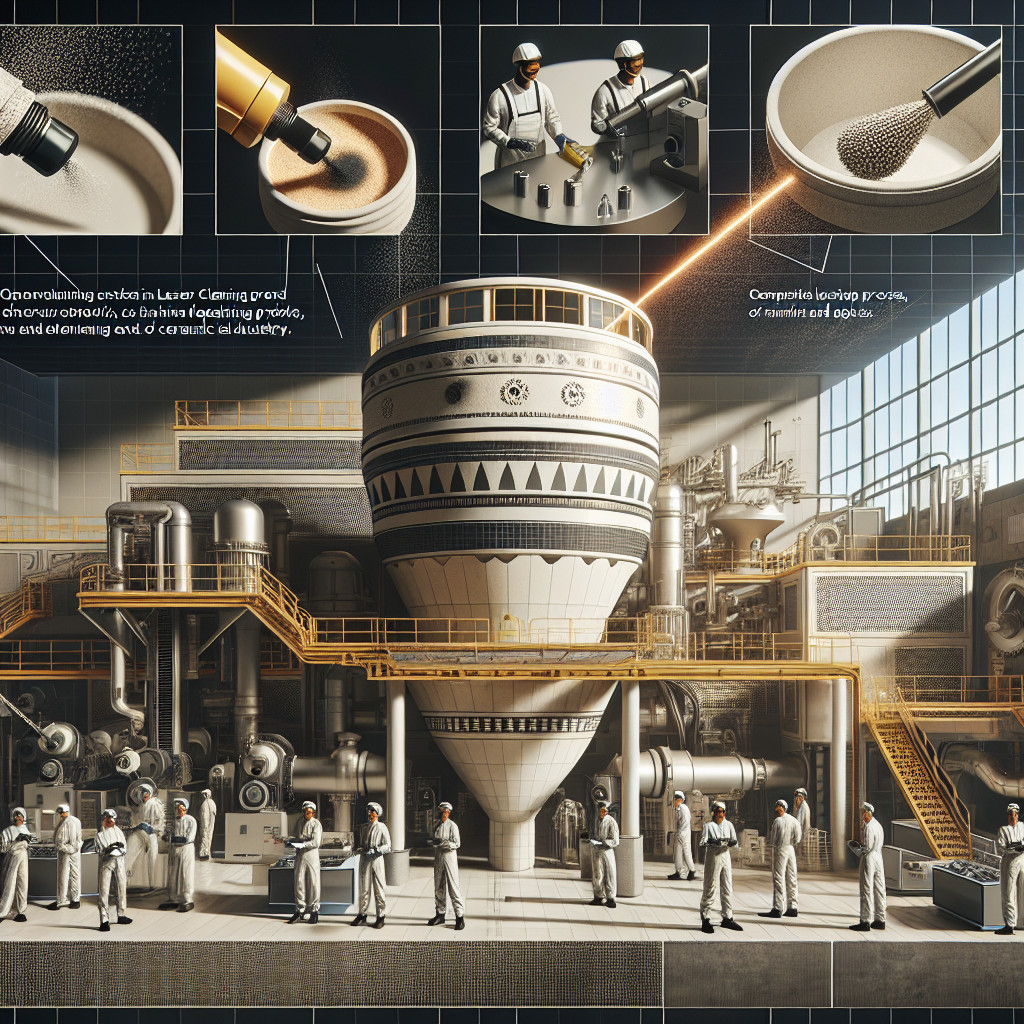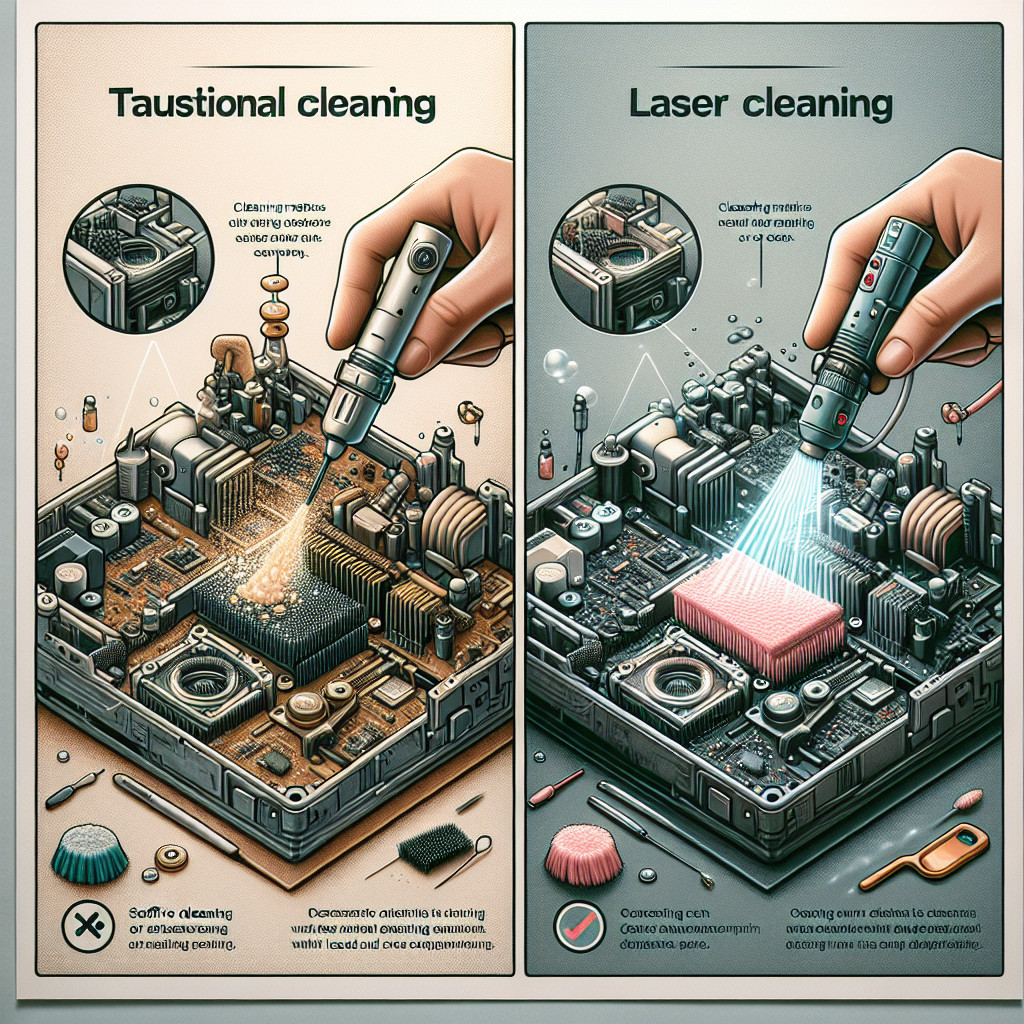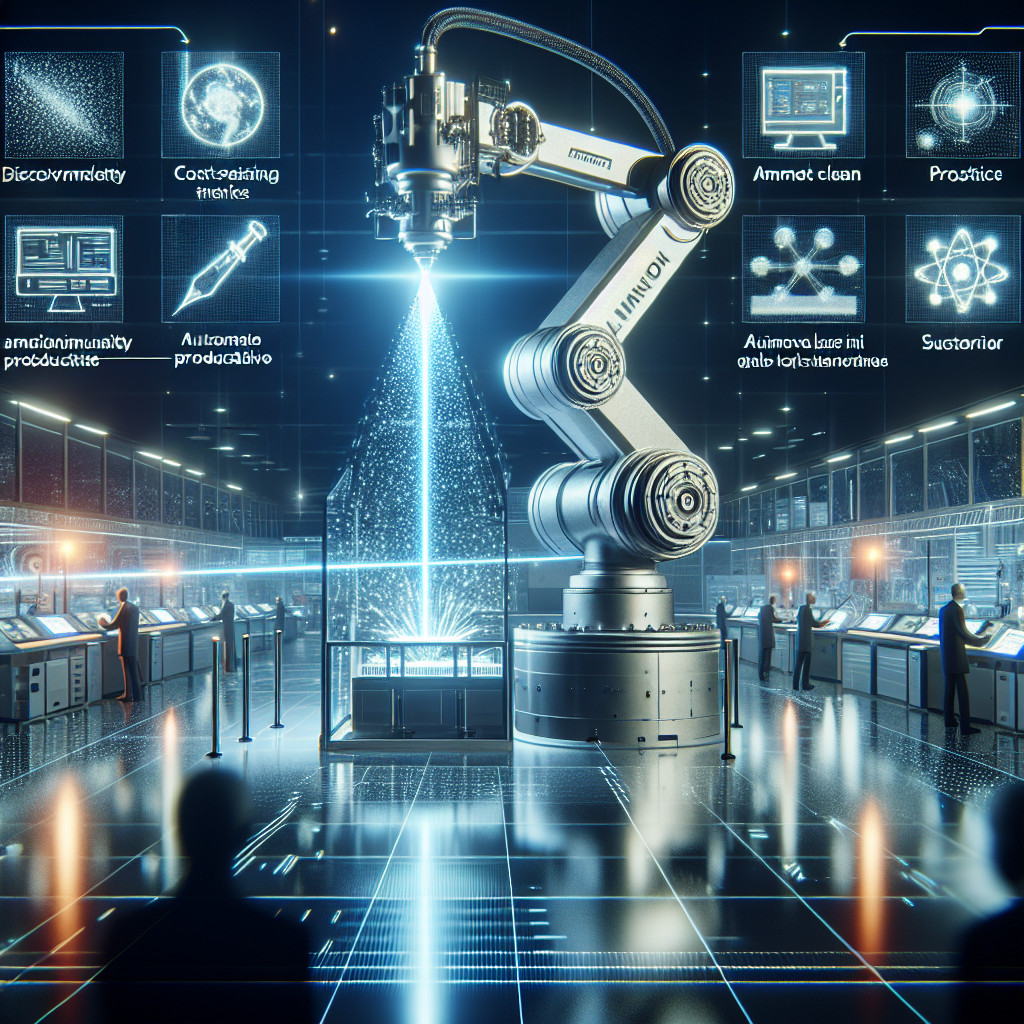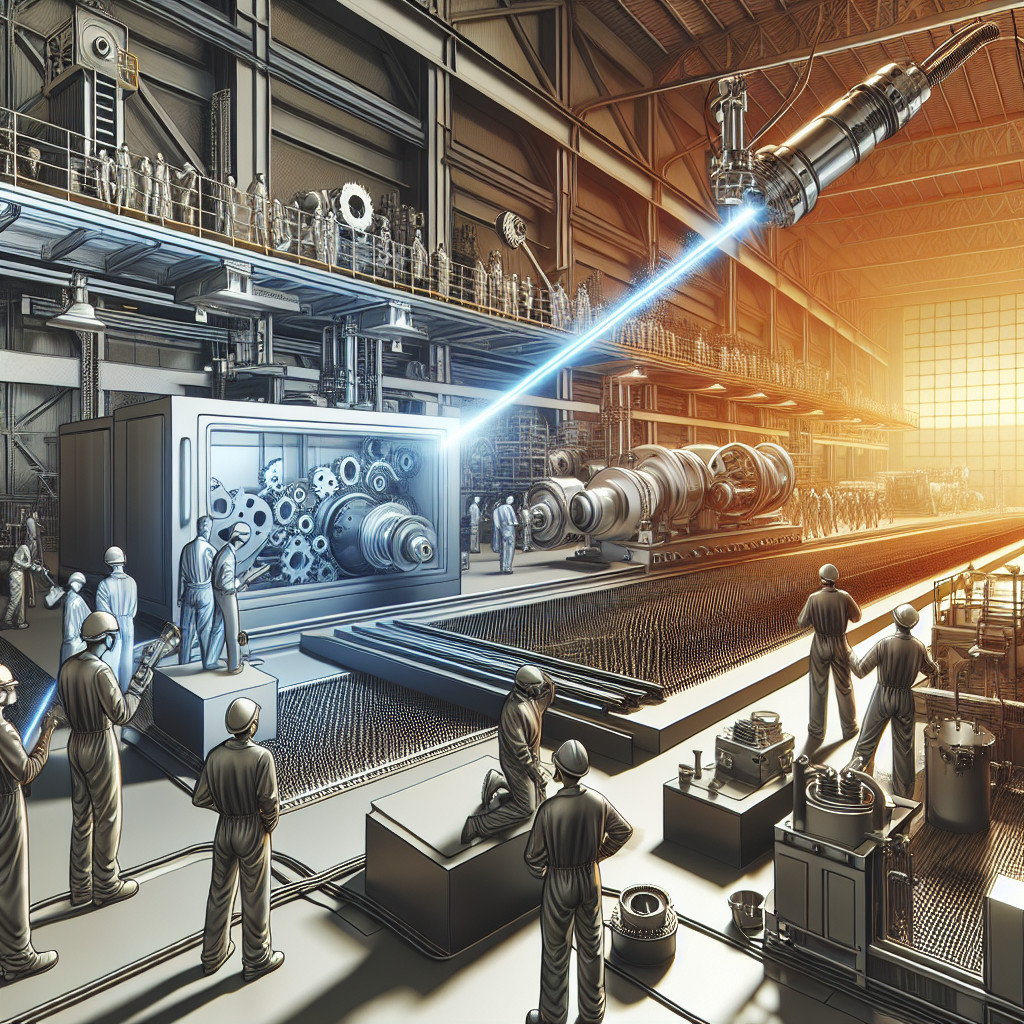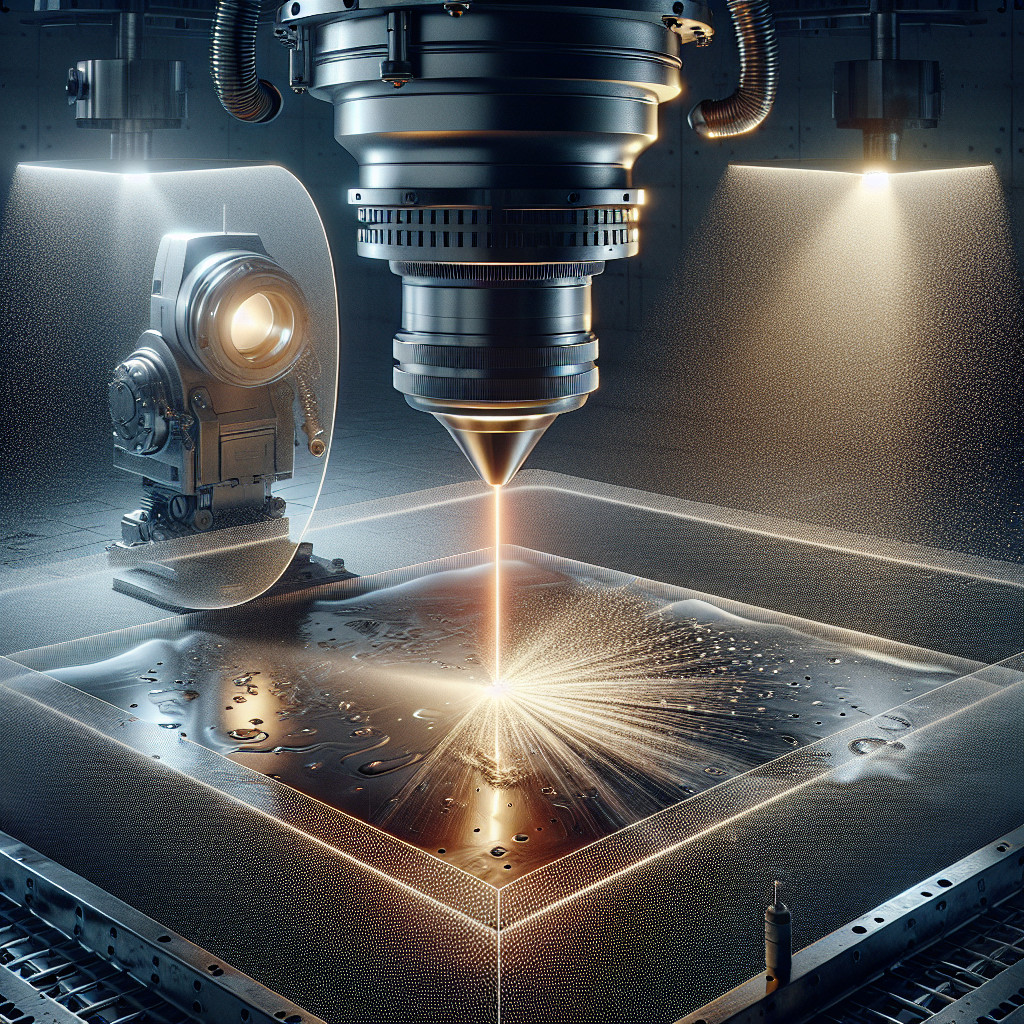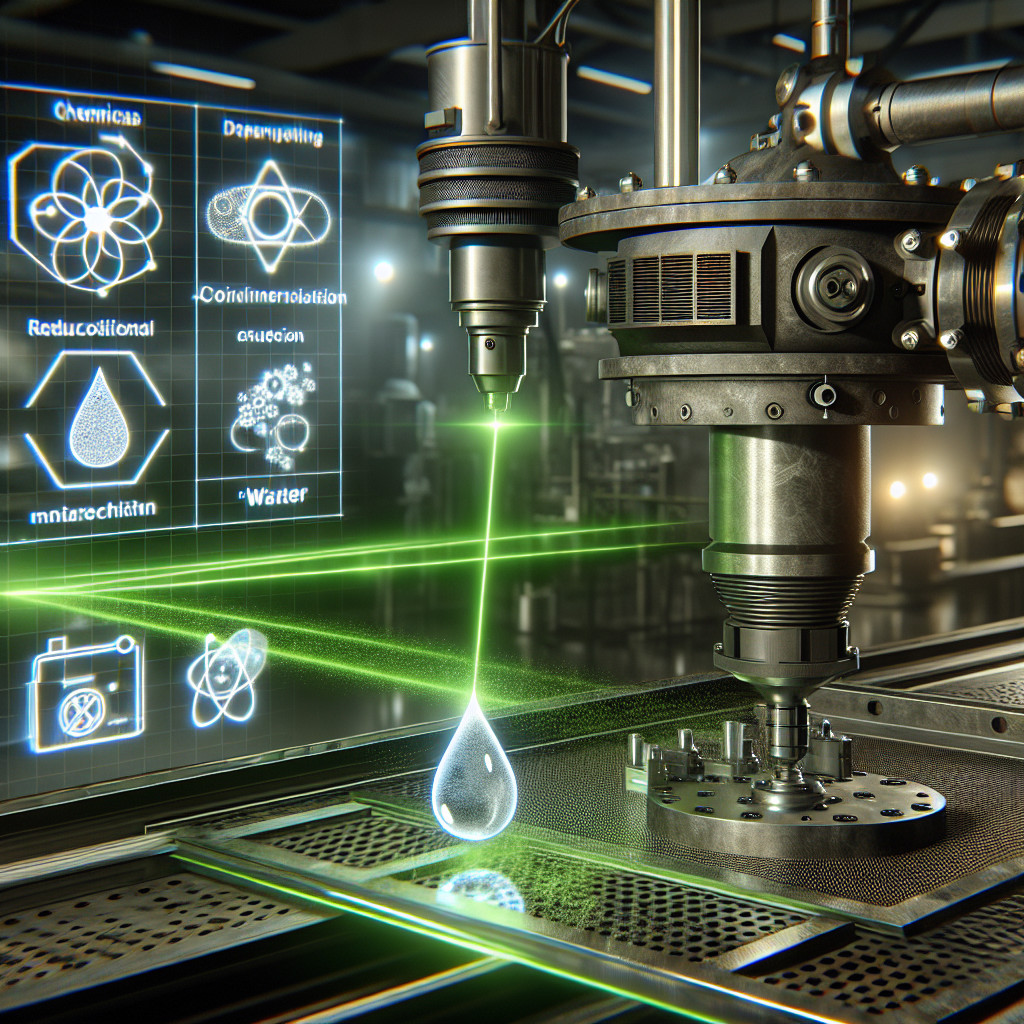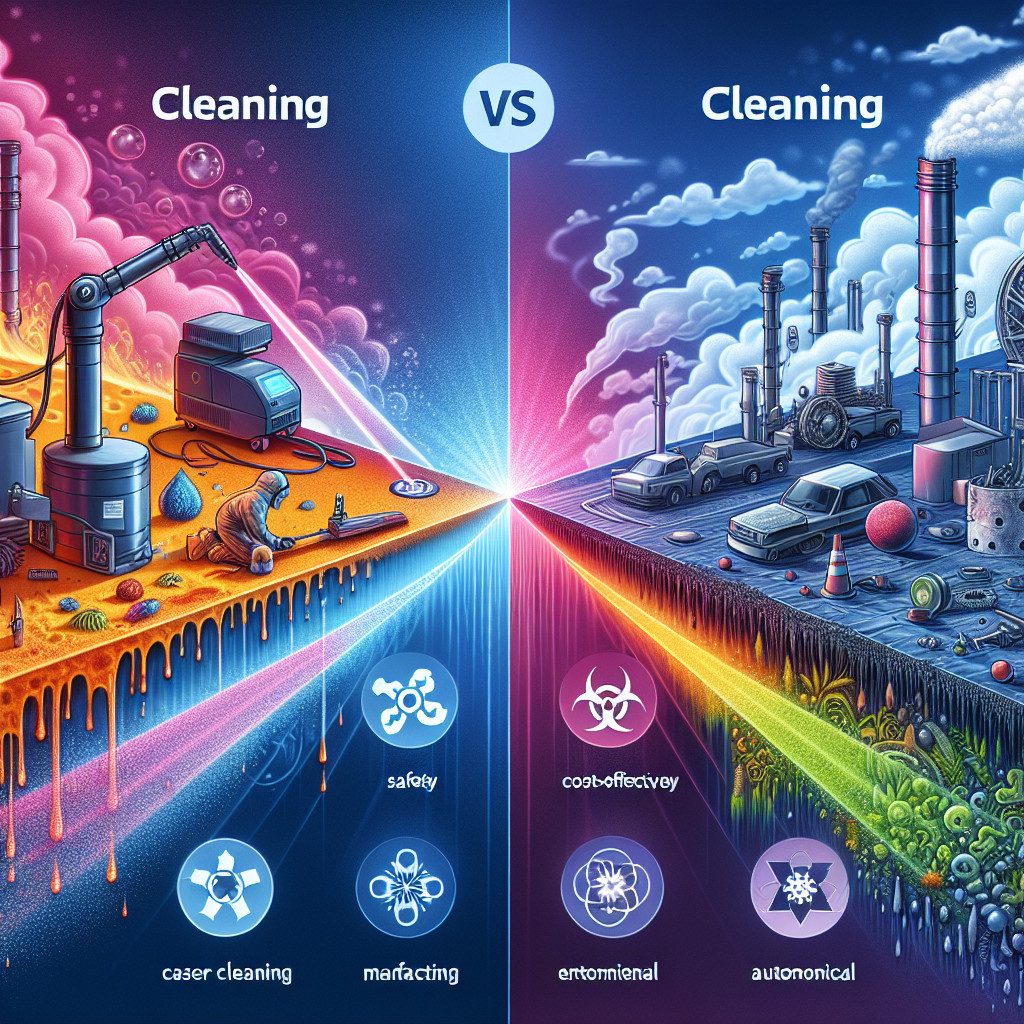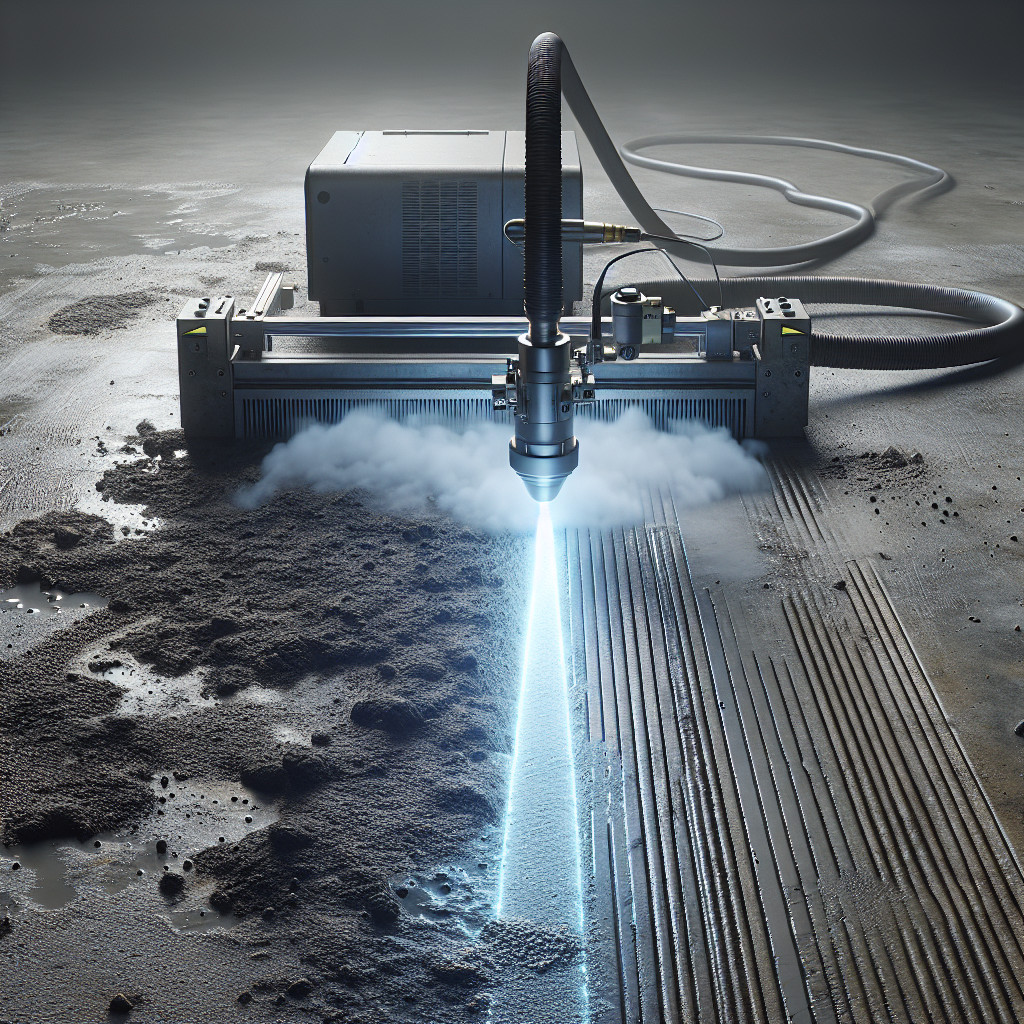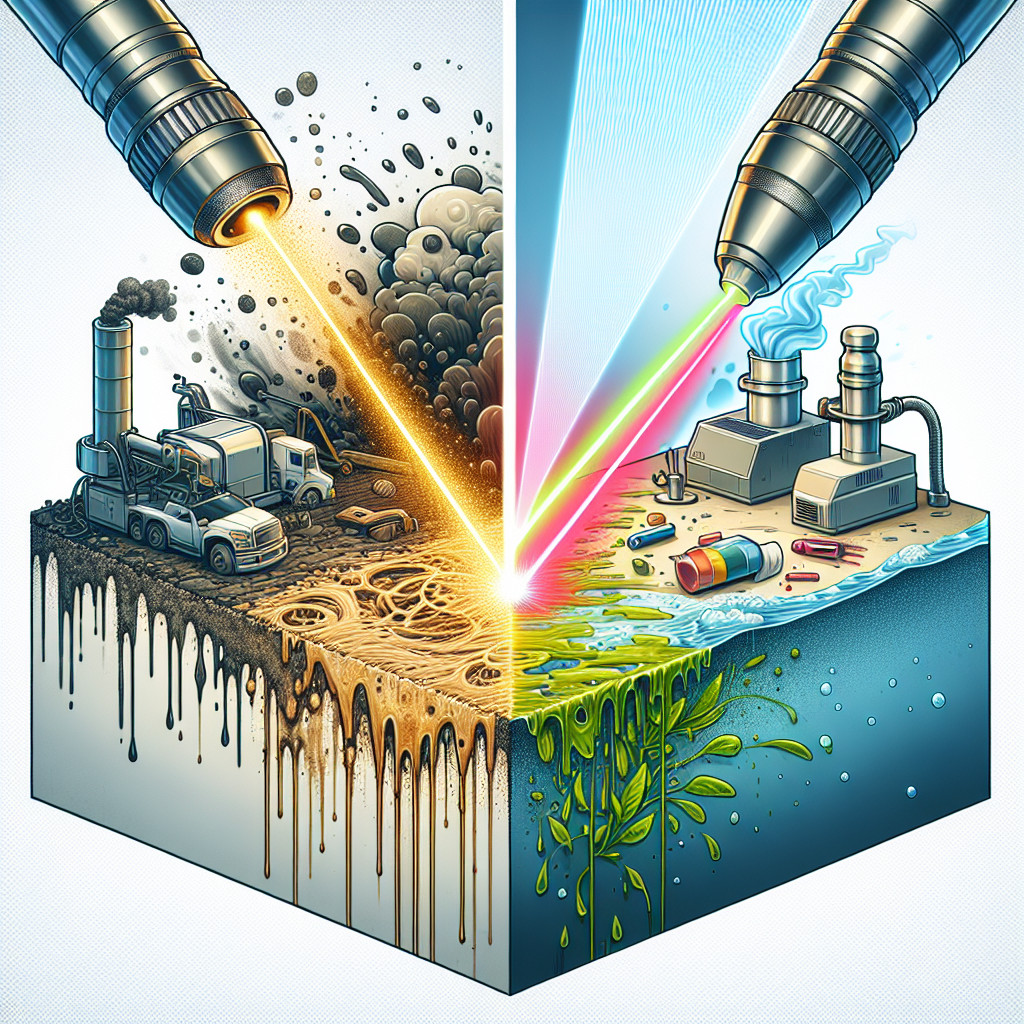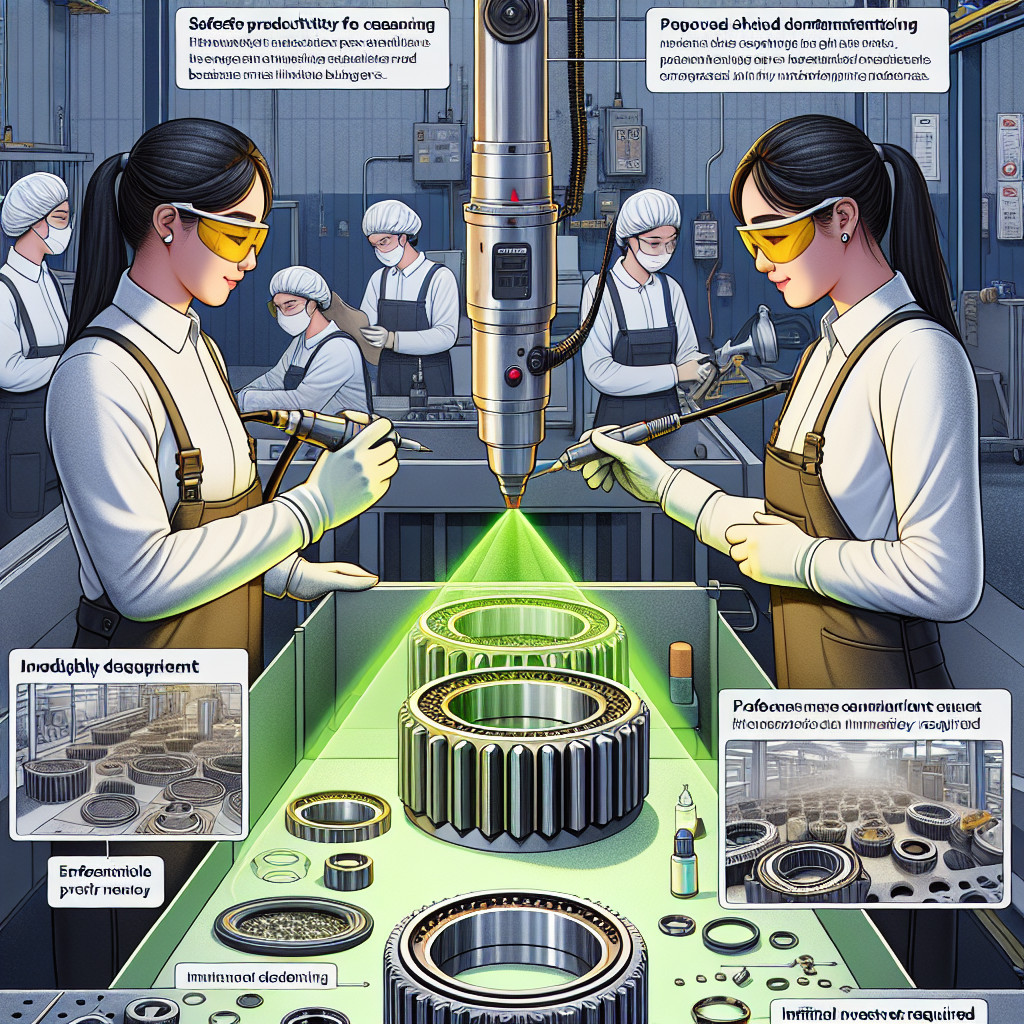- An overview of laser cleaning technology
- The potential cost savings of laser cleaning compared to traditional cleaning methods
- The ongoing maintenance costs of laser cleaning machines
- The safety considerations of laser cleaning for small businesses
- The potential cost savings of laser cleaning for small businesses with different levels of cleaning needs
- The potential cost savings of laser cleaning for small businesses with different levels of energy costs
- The potential cost savings of laser cleaning for small businesses with different levels of equipment depreciation costs
- The potential cost savings of laser cleaning compared to traditional cleaning methods
An overview of laser cleaning technology
Laser cleaning technology involves the use of high-intensity laser beams to vaporize or ablate unwanted substances from a surface. The laser beam is directed towards the target area, and upon contact, it interacts with the contaminants or coatings, causing them to evaporate or disintegrate. The process is highly precise and controlled, allowing for selective removal of specific materials without affecting the surrounding areas.
One of the key advantages of laser cleaning technology is its non-contact nature. Unlike traditional cleaning methods that involve physical contact with the surface, laser cleaning eliminates the risk of scratching or damaging delicate materials. This makes it particularly suitable for cleaning sensitive objects such as historical artifacts, artworks, and fragile electronic components.
Furthermore, laser cleaning technology is highly versatile and can be used on a wide range of surfaces, including metals, plastics, ceramics, glass, and even fabrics. It can effectively remove rust, paint, grease, oil, dirt, and other contaminants, restoring the surface to its original condition. The ability to clean different materials makes laser cleaning technology applicable in various industries, including automotive, aerospace, electronics, and conservation.
Another significant advantage of laser cleaning technology is its environmental friendliness. Traditional cleaning methods often involve the use of harsh chemicals that can be harmful to both human health and the environment. Laser cleaning eliminates the need for such chemicals, making it a safer and more sustainable option. Additionally, the process produces minimal waste, as the contaminants are vaporized or ablated, leaving behind only a small amount of residue that can be easily disposed of.
Despite its numerous advantages, laser cleaning technology does have some limitations. Firstly, it is a relatively expensive method compared to traditional cleaning techniques. The cost of acquiring and maintaining laser cleaning equipment can be prohibitive for some businesses. Additionally, the process may not be suitable for all types of contaminants or coatings. Certain materials, such as highly reflective surfaces or dark-colored coatings, may absorb the laser energy instead of being removed, limiting the effectiveness of the cleaning process.
In conclusion, laser cleaning technology offers a highly efficient, precise, and environmentally friendly method for removing contaminants and coatings from various surfaces. Its non-contact nature and versatility make it suitable for a wide range of applications, from delicate artifacts to industrial machinery. However, the cost and limitations associated with the technology should be carefully considered before implementation.
Keywords: laser cleaning technology, non-contact cleaning, surface restoration, environmental friendliness, versatile applications, limitations.
Long-tail phrases:
– Laser cleaning technology for delicate artifacts
– Advantages and disadvantages of laser cleaning
– Applications of laser cleaning in the automotive industry
– Laser cleaning versus traditional cleaning methods
– Environmental benefits of laser cleaning
– Cost-effectiveness of laser cleaning equipment
– Challenges of laser cleaning highly reflective surfaces.
The potential cost savings of laser cleaning compared to traditional cleaning methods
One of the significant advantages of laser cleaning is its potential for cost savings. Although the initial investment in laser cleaning equipment may be higher compared to traditional cleaning tools, the long-term cost savings outweigh the initial expenses. Traditional cleaning methods often require the use of chemicals, water, and other consumables, which can be costly over time. Laser cleaning eliminates the need for these consumables, resulting in significant cost savings in the long run.
Moreover, laser cleaning is a highly efficient process that requires minimal labor. Traditional cleaning methods often involve manual scrubbing or the use of heavy machinery, which can be time-consuming and labor-intensive. Laser cleaning, on the other hand, is a quick and automated process that requires minimal human intervention. This not only saves time but also reduces labor costs, making it a cost-effective cleaning solution.
Another cost-saving aspect of laser cleaning is its ability to prolong the lifespan of surfaces and objects. Traditional cleaning methods, such as abrasive scrubbing or the use of harsh chemicals, can cause wear and tear on surfaces, leading to their deterioration over time. Laser cleaning, being a non-contact and non-abrasive method, eliminates the risk of surface damage, thereby extending the lifespan of the cleaned objects. This, in turn, reduces the need for frequent replacements or repairs, resulting in significant cost savings in the long term.
Furthermore, laser cleaning is an environmentally friendly cleaning solution. Traditional cleaning methods often involve the use of chemicals that can be harmful to the environment. These chemicals can contaminate water sources and contribute to air pollution. Laser cleaning, on the other hand, is a chemical-free process that does not produce any harmful byproducts. It is a clean and sustainable cleaning method that aligns with the principles of environmental conservation.
In conclusion, laser cleaning offers significant cost savings compared to traditional cleaning methods. The elimination of consumables, reduced labor costs, extended lifespan of surfaces, and environmental friendliness contribute to the overall cost-effectiveness of laser cleaning. As technology continues to advance, laser cleaning is expected to become even more efficient and affordable, making it a preferred choice for various industries and applications.
Keywords: laser cleaning, traditional cleaning methods, cost savings, efficiency, non-contact, non-abrasive, contaminants, rust, paint, grease, consumables, labor costs, lifespan, environmentally friendly, sustainability.
Long-tail phrases:
1. .
2. Laser cleaning as a cost-effective alternative to traditional cleaning methods.
3. The efficiency and cost-effectiveness of laser cleaning.
4. The environmental benefits of laser cleaning.
5. Extending the lifespan of surfaces through laser cleaning.
The ongoing maintenance costs of laser cleaning machines
Another crucial aspect of laser cleaning machine maintenance is the calibration and alignment of the laser beam. Over time, the laser beam may lose its alignment, leading to reduced cleaning efficiency and accuracy. Regular calibration and alignment checks are necessary to ensure that the laser beam is focused correctly and delivers the desired cleaning results. This process often requires specialized equipment and expertise, which can contribute to the maintenance costs.
Furthermore, laser cleaning machines require routine cleaning and inspection to prevent the accumulation of debris and dust on the optical components. Any contamination on the optics can affect the quality of the laser beam and compromise the cleaning performance. Cleaning these delicate components requires careful handling and the use of appropriate cleaning solutions, which may incur additional expenses.
In addition to consumables, calibration, and cleaning, laser cleaning machines also require periodic servicing and repairs. Like any other machinery, these devices can experience wear and tear over time, leading to the need for maintenance or repairs. Servicing may involve replacing worn-out parts, adjusting settings, or addressing any mechanical issues. The cost of servicing and repairs can vary depending on the complexity of the problem and the availability of spare parts.
To minimize ongoing maintenance costs, it is crucial to invest in high-quality laser cleaning machines from reputable manufacturers. These machines often come with warranties and after-sales support, which can help reduce the financial burden of maintenance. Additionally, proper training and regular operator maintenance can also contribute to prolonging the lifespan of the machine and minimizing the need for frequent repairs.
In conclusion, while laser cleaning machines offer numerous benefits in terms of efficiency and effectiveness, it is essential to consider the ongoing maintenance costs associated with these devices. Regular consumable replacement, calibration, cleaning, and servicing are necessary to ensure optimal performance and longevity. By investing in high-quality machines and implementing proper maintenance practices, businesses can minimize the financial impact of ongoing maintenance.
Keywords: laser cleaning machines, maintenance costs, consumables, calibration, alignment, cleaning, servicing, repairs, high-quality, longevity.
Long-tail phrases: ongoing maintenance costs of laser cleaning machines, laser cleaning machine consumables, laser cleaning machine calibration, laser cleaning machine alignment, laser cleaning machine cleaning, laser cleaning machine servicing, laser cleaning machine repairs, high-quality laser cleaning machines, minimizing maintenance costs of laser cleaning machines.
The safety considerations of laser cleaning for small businesses
Additionally, small businesses should ensure that the laser cleaning equipment they purchase meets all safety standards and regulations. This includes checking for proper shielding and interlocks to prevent accidental activation of the laser. It is also important to regularly inspect and maintain the equipment to ensure its continued safe operation.
Another important safety consideration is the proper ventilation of the workspace. Laser cleaning can produce fumes and smoke as it vaporizes contaminants. These byproducts can be hazardous if inhaled, so it is crucial to have adequate ventilation systems in place to remove them from the working area. Small businesses should also consider implementing air filtration systems to further minimize the risk of exposure to harmful particles.
Furthermore, small businesses should establish clear safety protocols and procedures for laser cleaning operations. This includes designating a trained individual to operate the laser cleaning equipment and ensuring that all employees are aware of the potential hazards and safety measures. Regular safety training sessions should be conducted to keep employees up to date with the latest safety practices.
In addition to these general safety considerations, there are specific precautions that small businesses should take depending on the type of surface being cleaned. For example, laser cleaning on metal surfaces can produce sparks, which can pose a fire hazard. Small businesses should have fire extinguishers readily available and ensure that the work area is clear of flammable materials.
When it comes to laser cleaning delicate surfaces such as glass or ceramics, small businesses should be cautious of potential damage caused by the laser beam. It is important to test the laser settings on a small area before proceeding with the full cleaning process. This will help determine the optimal power and speed settings to minimize the risk of surface damage.
In conclusion, laser cleaning offers small businesses a powerful and efficient solution for removing contaminants from various surfaces. However, it is crucial to prioritize safety when implementing this technology. Investing in proper safety equipment, ensuring compliance with regulations, maintaining ventilation systems, establishing safety protocols, and taking surface-specific precautions are all essential for a safe laser cleaning operation.
Keywords: laser cleaning, small businesses, safety considerations, high-powered lasers, protective eyewear, safety equipment, safety standards, ventilation, fumes, smoke, safety protocols, fire hazard, delicate surfaces, surface damage.
Long-tail phrases:
1. Importance of safety in laser cleaning for small businesses.
2. Safety equipment and regulations for laser cleaning in small businesses.
3. Ventilation and air filtration in laser cleaning operations.
4. Establishing safety protocols for laser cleaning in small businesses.
5. Precautions for laser cleaning on different surfaces.
6. Fire hazards and prevention in laser cleaning.
7. Avoiding surface damage in laser cleaning for small businesses.
The potential cost savings of laser cleaning for small businesses with different levels of cleaning needs
One of the primary benefits of laser cleaning is its cost-effectiveness. While the initial investment in laser cleaning equipment may be higher than traditional cleaning tools, the long-term savings can be significant. Laser cleaning eliminates the need for expensive chemicals, reduces labor costs, and minimizes equipment maintenance and replacement expenses. Additionally, laser cleaning is a highly efficient process that requires less time and effort compared to manual cleaning methods. This means that small businesses can save on labor costs and allocate their resources more effectively.
Another advantage of laser cleaning is its environmental friendliness. Traditional cleaning methods often involve the use of harsh chemicals that can be harmful to both human health and the environment. Laser cleaning, on the other hand, is a chemical-free process that produces no hazardous waste or emissions. This makes it a sustainable and eco-friendly choice for small businesses that are committed to reducing their environmental footprint. By adopting laser cleaning technology, small businesses can contribute to a cleaner and healthier planet while also saving on disposal and compliance costs associated with traditional cleaning methods.
Furthermore, laser cleaning offers a high level of precision and control. The intensity and focus of the laser beam can be adjusted to suit different cleaning needs, ensuring that only the targeted contaminants are removed without damaging the underlying surface. This level of precision is particularly beneficial for small businesses that deal with delicate or intricate equipment or surfaces. Laser cleaning can effectively remove rust, paint, grease, and other stubborn contaminants without causing any damage or distortion. This eliminates the need for costly repairs or replacements, further reducing the overall cleaning costs for small businesses.
In conclusion, laser cleaning is a cost-effective and environmentally friendly solution for small businesses with different levels of cleaning needs. By investing in laser cleaning technology, small businesses can achieve significant cost savings in the long run. The elimination of chemicals, reduced labor costs, and minimal equipment maintenance and replacement expenses contribute to the overall cost-effectiveness of laser cleaning. Additionally, laser cleaning’s precision and control ensure that only the targeted contaminants are removed without causing any damage, further reducing the need for costly repairs or replacements. Small businesses can also demonstrate their commitment to sustainability by adopting laser cleaning, as it is a chemical-free process that produces no hazardous waste or emissions.
Keywords: laser cleaning, cost savings, small businesses, cleaning needs, efficiency, traditional cleaning methods, chemicals, manual labor, expensive equipment, environmentally friendly, non-contact method, contaminants, vaporizing, ablating, clean surface, metals, plastics, ceramics, delicate surfaces, artwork, historical artifacts, advantages, initial investment, long-term savings, labor costs, equipment maintenance, replacement expenses, time-saving, environmental friendliness, hazardous waste, emissions, precision, control, rust, paint, grease, stubborn contaminants, damage, distortion, repairs, replacements, sustainability, commitment, disposal, compliance costs.
Long-tail phrases:
– Laser cleaning as a cost-effective solution for small businesses
– The environmental benefits of laser cleaning for small businesses
– Precision and control in laser cleaning for delicate surfaces
– Laser cleaning: a sustainable choice for small businesses
– The potential cost savings of laser cleaning technology for small businesses.
The potential cost savings of laser cleaning for small businesses with different levels of energy costs
Laser cleaning is a non-contact, non-abrasive method of removing contaminants from surfaces using laser beams. The laser beam is directed at the surface to be cleaned, and the energy from the laser vaporizes or ablates the contaminants, leaving behind a clean surface. This technology is highly precise and can be used on a wide range of materials, including metals, plastics, ceramics, and composites. Laser cleaning offers several advantages over traditional cleaning methods, including reduced labor costs, increased productivity, and improved environmental sustainability.
Cost Savings Analysis:
To understand the potential cost savings of laser cleaning for small businesses, it is essential to consider the energy costs associated with this technology. Laser cleaning systems require electricity to power the laser source, cooling systems, and other components. The energy consumption of laser cleaning systems can vary depending on the power of the laser, the size of the cleaning area, and the duration of the cleaning process. Therefore, small businesses with different levels of energy costs will experience varying degrees of cost savings.
Case Study 1: Small Business with High Energy Costs
Consider a small manufacturing business that operates in an area with high energy costs. This business currently uses traditional cleaning methods, which involve the use of chemicals and manual labor. The cost of chemicals, water, and labor can be significant, especially when considering the frequency of cleaning required. By adopting laser cleaning technology, this business can eliminate the need for chemicals and reduce labor costs. Although the energy costs associated with laser cleaning may be higher than traditional methods, the overall cost savings can still be substantial due to reduced chemical and labor expenses.
Case Study 2: Small Business with Moderate Energy Costs
Now, let’s examine a small business operating in an area with moderate energy costs. This business already uses some automated cleaning equipment but still incurs significant labor costs. By implementing laser cleaning technology, this business can further reduce labor expenses and improve productivity. The energy costs associated with laser cleaning may be slightly higher than the existing automated equipment, but the overall cost savings from reduced labor can outweigh the energy expenses.
Case Study 3: Small Business with Low Energy Costs
Lastly, let’s consider a small business operating in an area with low energy costs. This business may already have efficient cleaning processes in place, but laser cleaning technology can still offer cost savings. While the energy costs associated with laser cleaning may be higher than the existing methods, the reduced labor expenses and increased productivity can still result in significant overall cost savings.
Keywords: laser cleaning, cost savings, small businesses, energy costs, traditional cleaning methods, chemicals, water, manual labor, efficiency, productivity, environmental sustainability.
Long-tail phrases: potential cost savings of laser cleaning for small businesses, laser cleaning technology for small businesses, energy costs and laser cleaning, cost analysis of laser cleaning for small businesses, benefits of laser cleaning for small businesses.
The potential cost savings of laser cleaning for small businesses with different levels of equipment depreciation costs
Laser cleaning is a non-contact, non-abrasive method of removing contaminants from surfaces. It utilizes a high-intensity laser beam to vaporize or ablate the unwanted material, leaving behind a clean surface. Unlike traditional cleaning methods, laser cleaning does not require the use of chemicals, solvents, or abrasive materials. This not only reduces the cost of purchasing these materials but also eliminates the need for their disposal, resulting in additional cost savings.
Cost Savings for Small Businesses:
The potential cost savings of laser cleaning for small businesses can vary depending on the level of equipment depreciation costs. Equipment depreciation refers to the decrease in value of an asset over time due to wear and tear or obsolescence. Small businesses with high equipment depreciation costs can benefit greatly from laser cleaning as it can extend the lifespan of their equipment.
By regularly cleaning and maintaining their equipment with laser technology, small businesses can reduce the need for costly repairs or replacements. Laser cleaning can effectively remove rust, paint, grease, and other contaminants that can cause equipment to deteriorate faster. This not only saves money on repair and replacement costs but also minimizes downtime, allowing businesses to operate more efficiently.
Furthermore, laser cleaning can improve the performance and efficiency of equipment. By removing contaminants from surfaces, it ensures optimal functioning and reduces energy consumption. This can result in additional cost savings for small businesses, especially those with high energy costs.
Different Levels of Equipment Depreciation Costs:
Small businesses may have varying levels of equipment depreciation costs depending on the nature of their operations and the type of equipment they use. For example, manufacturing businesses that rely heavily on machinery may have higher equipment depreciation costs compared to service-based businesses.
For small businesses with low equipment depreciation costs, the cost savings from laser cleaning may not be as significant. However, they can still benefit from the reduced need for chemical cleaning agents and the improved efficiency of their equipment.
On the other hand, small businesses with high equipment depreciation costs can experience substantial cost savings with laser cleaning. The longer lifespan of their equipment means fewer repair and replacement expenses, resulting in significant financial benefits.
Keywords: laser cleaning, cost savings, small businesses, equipment depreciation costs, maintenance, efficiency, eco-friendly, non-contact, non-abrasive, contaminants, chemicals, solvents, abrasive materials, repairs, replacements, rust, paint, grease, performance, energy consumption, manufacturing, service-based.
Long-tail phrases: potential cost savings of laser cleaning for small businesses, equipment depreciation costs and laser cleaning, benefits of laser cleaning for small businesses, cost savings of laser cleaning for small businesses with different levels of equipment depreciation costs, laser cleaning as a cost-effective solution for small businesses, laser cleaning for small businesses with high equipment depreciation costs.
The potential cost savings of laser cleaning compared to traditional cleaning methods
One of the significant advantages of laser cleaning is its potential for cost savings. Although the initial investment in laser cleaning equipment may be higher compared to traditional cleaning tools, the long-term cost savings outweigh the initial expenses. Traditional cleaning methods often require the use of chemicals, water, and other consumables, which can be costly over time. Laser cleaning eliminates the need for these consumables, resulting in significant cost savings in the long run.
Moreover, laser cleaning is a highly efficient process that requires minimal labor. Traditional cleaning methods often involve manual scrubbing or the use of heavy machinery, which can be time-consuming and labor-intensive. Laser cleaning, on the other hand, is a quick and automated process that requires minimal human intervention. This not only saves time but also reduces labor costs, making it a cost-effective cleaning solution.
Another cost-saving aspect of laser cleaning is its ability to prolong the lifespan of surfaces and objects. Traditional cleaning methods, such as abrasive scrubbing or chemical cleaning, can cause wear and tear on surfaces, leading to their deterioration over time. Laser cleaning, being a non-contact and non-abrasive method, eliminates the risk of surface damage, thereby extending the lifespan of the cleaned objects. This, in turn, reduces the need for frequent replacements or repairs, resulting in significant cost savings in the long term.
Furthermore, laser cleaning is an environmentally friendly cleaning solution. Traditional cleaning methods often involve the use of chemicals that can be harmful to the environment. These chemicals can contaminate water sources and contribute to air pollution. Laser cleaning, on the other hand, is a chemical-free process that does not produce any harmful byproducts. It is a clean and sustainable cleaning method that aligns with the principles of environmental conservation.
In conclusion, laser cleaning offers significant cost savings compared to traditional cleaning methods. The elimination of consumables, reduced labor costs, extended lifespan of surfaces, and environmental friendliness contribute to the overall cost-effectiveness of laser cleaning. As technology continues to advance, laser cleaning is expected to become even more efficient and affordable, making it a preferred choice for various industries and applications.
Keywords: laser cleaning, traditional cleaning methods, cost savings, efficiency, non-contact, non-abrasive, contaminants, rust, paint, grease, consumables, labor costs, lifespan, environmentally friendly, sustainability.
Long-tail phrases:
1. .
2. Advantages of laser cleaning over traditional cleaning methods.
3. Laser cleaning: a cost-effective and efficient cleaning solution.
4. The environmental benefits of laser cleaning.
5. Laser cleaning: a sustainable approach to surface cleaning.
- Laser cleaning and long-term cost savings – cost analysis - February 29, 2024
- Laser cleaning and reducing emissions of harmful substances - February 28, 2024
- Can laser cleaning be used in veterinary medicine? - February 28, 2024



